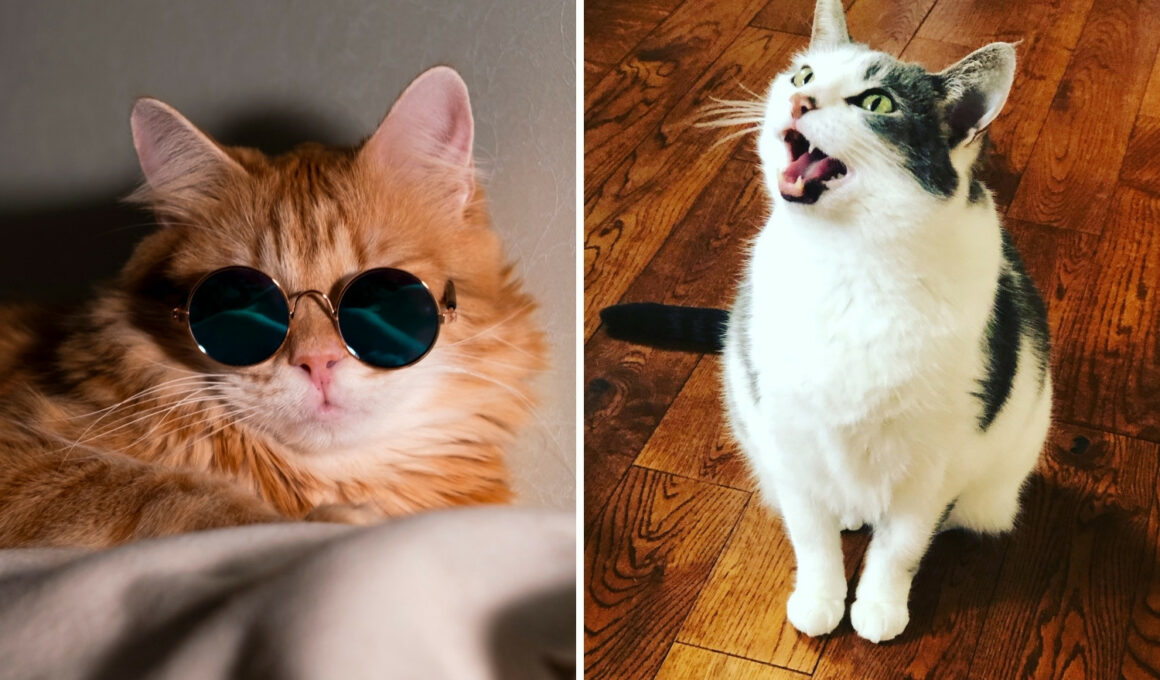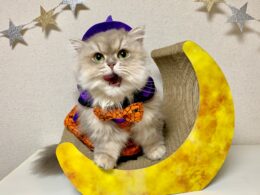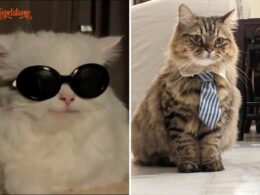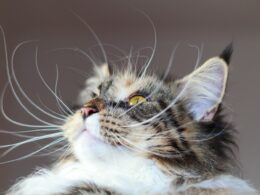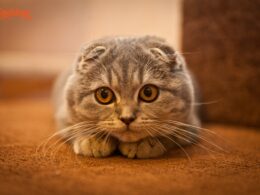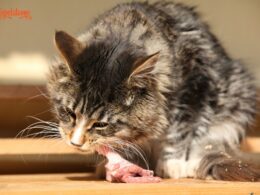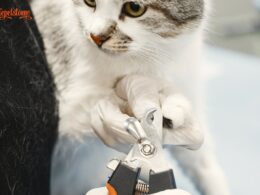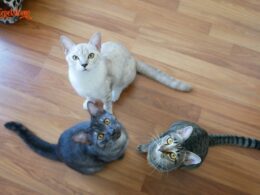Table of Contents Show
As a dedicated cat parent for many years, I’ve come to realize that cats are not just our cuddly companions but also incredibly intuitive creatures.
While they might not always greet you at the door with a wagging tail or a slobbery kiss, there’s a depth in their eyes and subtlety in their actions that suggests a profound connection.
Now, imagine if this bond went beyond the usual meows, purrs, and tail wags. What if your cat were trying to communicate with you on a level we’ve barely begun to comprehend?
Let’s explore the fascinating possibility of telepathic communication with our cats and uncover the signs that hint your cat might just be reaching out to your mind.
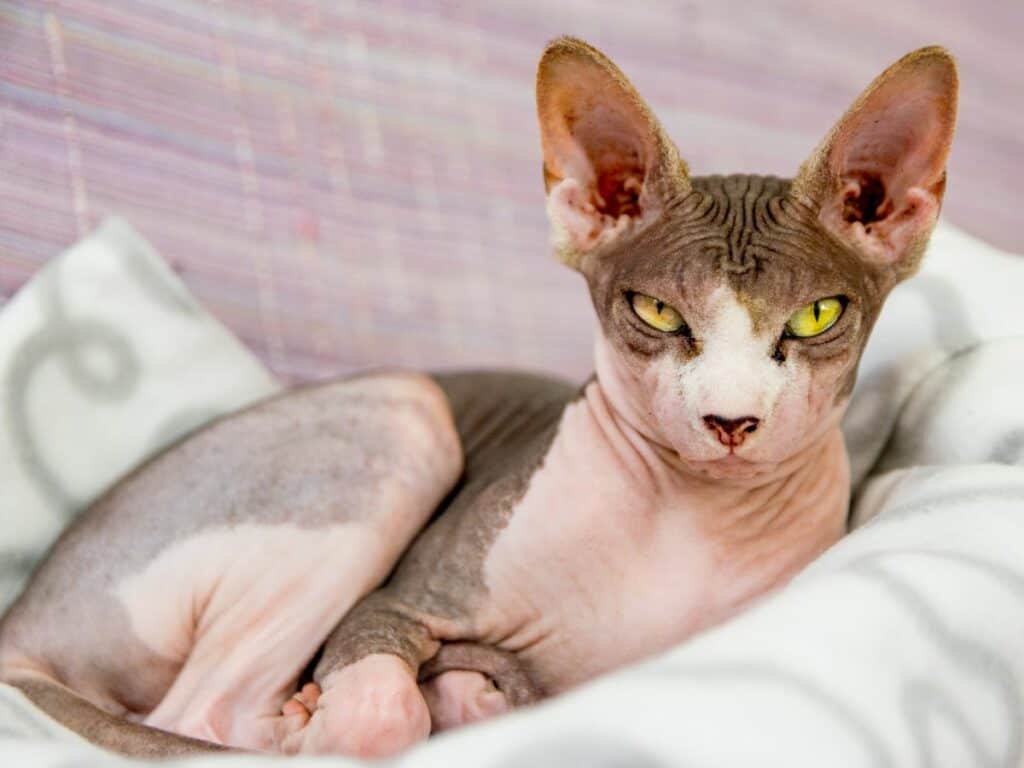
The Science Behind Animal Telepathy
The world of animal telepathy, while intriguing, is often met with skepticism by the scientific community. Still, that hasn’t stopped researchers and cat enthusiasts alike from delving into the possibility.
Some studies investigate interspecies communication, focusing on how animals, especially pets, seem to have an uncanny ability to sense things before they happen.
For instance, there have been anecdotal reports of pets behaving peculiarly before earthquakes or other significant events. While these reports haven’t been decisively linked to telepathy, they indicate a heightened sense of animal awareness.
Cats, in particular, are known for their sharp senses. Their night vision is legendary, allowing them to see in light levels six times lower than what a human needs.
Moreover, their whiskers are highly sensitive to vibrations, changes in airflow, and touch, enabling them to detect even the slightest movement around them. This sensitivity isn’t just physical; it’s also emotional.
Many cat parents can attest to their feline friends being attuned to their moods, often offering solace during downtimes or sharing in moments of joy.
Additionally, cats have a broader range of hearing frequencies compared to humans. They can pick up ultrasonic sounds, which are beyond our hearing range.
Such heightened auditory capabilities might allow them to detect subtle changes in their environment, and perhaps, even their human companions’ unsaid emotions or intentions.
In essence, while the concept of pure telepathy remains largely in the realm of speculation, there’s no denying that cats possess heightened senses that allow them to connect with their surroundings and their humans in unique and profound ways.
Sign #1: Intense Staring
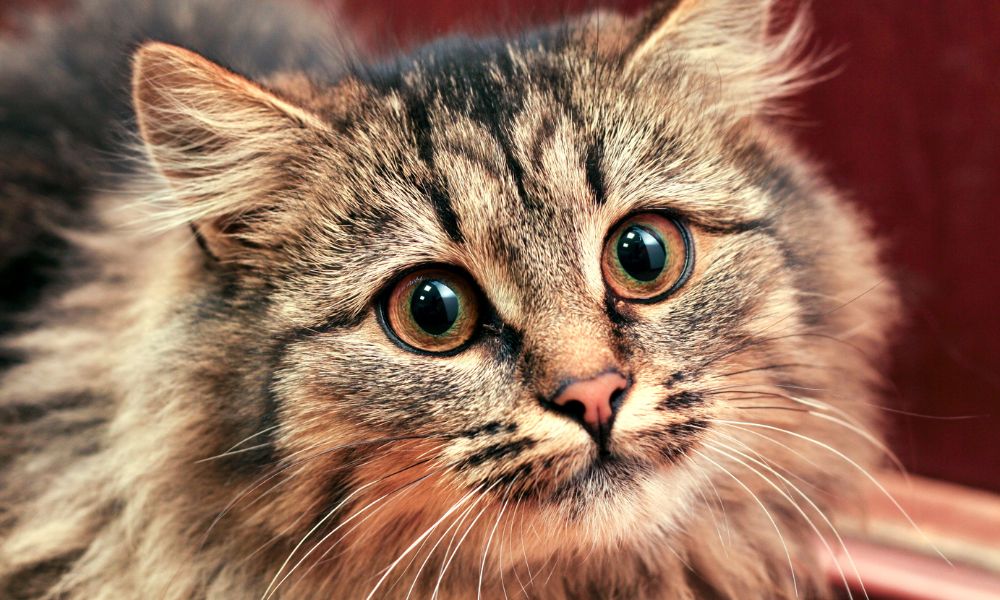
If you’ve ever been on the receiving end of a prolonged, intense gaze from your cat, you’ll know it feels different from their casual, curious glances. This kind of stare is intense, focused, and seems to pierce right through you. But what is your feline friend trying to convey?
Intense staring in the feline world is a loaded gesture. In the wild, cats use their gaze for various purposes, from establishing dominance to expressing interest. However, this behavior can take on additional meanings in the domestic setting.
When your cat stares deeply into your eyes, it’s possible they’re trying to establish a connection or communicate with you. Just as humans might maintain eye contact during an important conversation, a cat might use its gaze to draw your attention and convey its feelings or intentions.
This doesn’t necessarily mean they’re transmitting their thoughts telepathically. Still, this form of non-verbal communication is vital in understanding your cat’s emotions. A slow blink following an intense gaze, for instance, is often considered a “cat kiss” – a sign of trust and affection.
Moreover, some experts believe that cats can read human facial expressions to some extent. So, when your cat is staring at you, they might be trying to gauge your mood, ensuring everything’s okay or simply expressing their own feelings of contentment and security.
In summary
While we may not fully grasp every nuance behind our cat’s intense gaze, it’s evident that these moments of prolonged eye contact are crucial in the world of feline communication. They offer a window into your cat’s emotions and perhaps even an attempt to connect with you on a deeper level.
Sign #2: Synchronized Sleeping Patterns
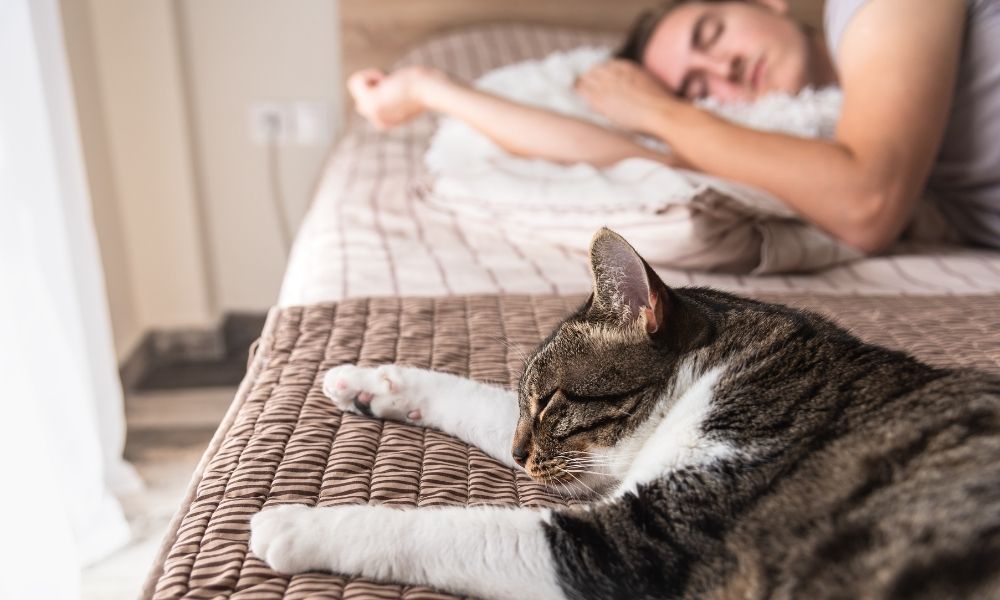
One of the most endearing habits of our feline friends is their love for a good nap. But have you ever noticed that sometimes your cat’s snooze time eerily aligns with your own? It’s not mere coincidence; it’s a fascinating dance of synchronized sleeping patterns.
Many cat parents have observed that their cats seem to adjust their sleep schedules to match theirs. Whether it’s curling up beside you for a night’s sleep or taking a nap when you decide to rest on a lazy afternoon, cats often seem in tune with their owner’s sleep rhythms. But why does this synchronization occur?
First, let’s consider the domestication of cats. Over time, as cats have adapted to human lifestyles, it’s plausible they’ve also adjusted their natural nocturnal tendencies to better align with our diurnal patterns.
By doing so, they ensure more quality time with their human companions and, possibly, better access to resources (like food and play). But beyond mere practicality, there’s an emotional and energetic element at play. When a cat chooses to rest with you, it’s not just seeking warmth or comfort.
It’s also signaling trust, bonding, and a desire for closeness. Your resting state could serve as a calming cue for your cat, signaling that it’s a good time to recharge. Furthermore, there’s a theory that cats might be tapping into your energy as you both rest.
This doesn’t mean they’re siphoning off your vitality, but rather that they’re aligning their energy with yours, leading to a harmonized state of relaxation. Think of it as two instruments playing the same melody, each complementing and resonating with the other.
In essence
Synchronized sleeping patterns between you and your feline might be more than mere habit. It could be a manifestation of the deep bond you share, reflecting mutual trust, emotional alignment, and perhaps even an unspoken, telepathic connection.
Sign #3: Answering Your Unspoken Thoughts
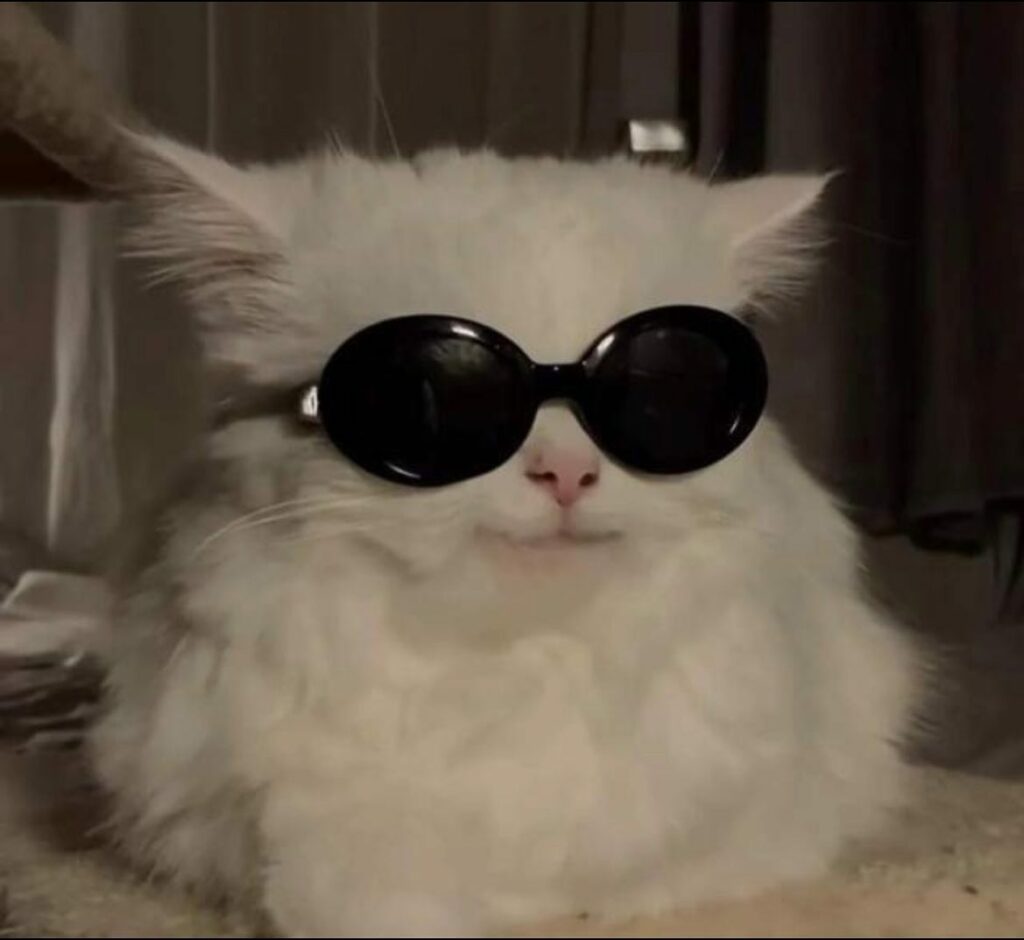
Have you ever had one of those moments where you merely thought about feeding your cat or playing with them, and suddenly, they appear by your side, eyes expectant? It’s almost as if they’ve read your mind, responding to a silent call you didn’t even know you made.
Such instances can be both baffling and intriguing. While it’s tempting to dismiss them as mere coincidences, when they happen repeatedly, one can’t help but wonder if there’s more to it.
Cats are incredibly observant creatures. Their heightened senses, combined with their keen observation skills, make them experts at picking up subtle changes in their environment. This includes detecting minuscule shifts in your behavior, mood, or even routine.
For instance, if you have a habit of glancing at the clock, and then stretching before you feed your cat, over time they’ll associate these subtle cues with mealtime. So, the day you only think about feeding them and unconsciously glance at the clock, they might come running, anticipating their meal.
However, beyond these learned associations, cats also have a remarkable intuition about human emotions. Many cat owners can attest to instances where their feline friends provided comfort during emotional distress or seemed to sense a change in mood without any overt signals.
This emotional attunement is where the line between learned behavior and a deeper, telepathic connection gets blurry. Some believe that cats can pick up on energy shifts, allowing them to tune into their owner’s emotional state. It’s a form of non-verbal, intuitive communication, rooted in the close bond between cat and owner.
In conclusion
While your cat might not be “reading” your thoughts in the conventional sense, their ability to respond to unspoken cues and emotions is undeniable. Whether it’s learned behavior, intuition, or a touch of telepathy, these instances underscore the profound connection and understanding between cats and their human companions.
Sign #4: Unexpected Reactions to Your Emotions
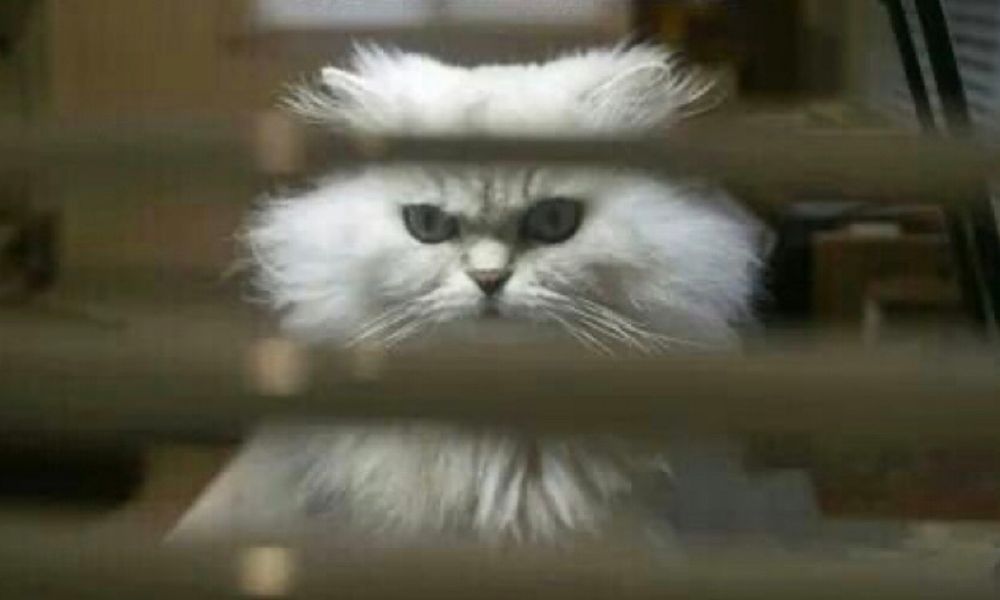
Cats, often portrayed as aloof or indifferent, hold a secret: they are incredibly attuned to their owner’s emotional state. While they might not always wear their hearts on their furry sleeves, their reactions to our feelings can be both surprising and heartwarming.
Have you ever noticed your feline friend becoming unusually clingy when you’re feeling down? Or perhaps they become playful and animated when you’re in high spirits? These aren’t random behaviors. Cats, in their unique way, often mirror or respond to our emotional states.
Mirroring Your Mood
Just as humans can pick up on the moods of those around them, cats too can sense the emotional atmosphere of their environment. A tense household might lead to a more skittish or withdrawn cat, while a joyful ambiance could see your cat being more active and engaged.
Seeking Affection in Your Distress
One of the most touching behaviors in cats is their tendency to offer comfort during tough times. Many cat owners have shared stories of their pets curling up next to them or purring gently when they’re feeling upset, anxious, or unwell. This act, while seemingly simple, is a profound gesture of empathy and support.
Avoidance or Over-activity during Stress
On the flip side, some cats might react to their owner’s distress by becoming hyperactive, knocking things over, or even hiding. This isn’t them being insensitive; rather, they might be processing the emotional upheaval in their own feline way.
The reasons behind these reactions are a blend of nature and nurture. Over time, as cats bond with their owners, they learn to associate certain emotional cues with specific outcomes.
A crying owner might often provide cuddles, making the cat associate tears with affection. On a deeper level, the strong bond shared between a cat and its owner might make the cat more sensitive to any emotional shifts, prompting them to react in ways that seem almost intuitive.
In essence
Our feline companions are more in tune with our emotions than we sometimes give them credit for. Their unexpected reactions are a testament to the depth of understanding and connection they share with us. Whether it’s through comfort, play, or simple presence, cats have a unique way of resonating with our feelings, making the bond we share with them all the more special.
Sign #5: Physical Purring Vibrations
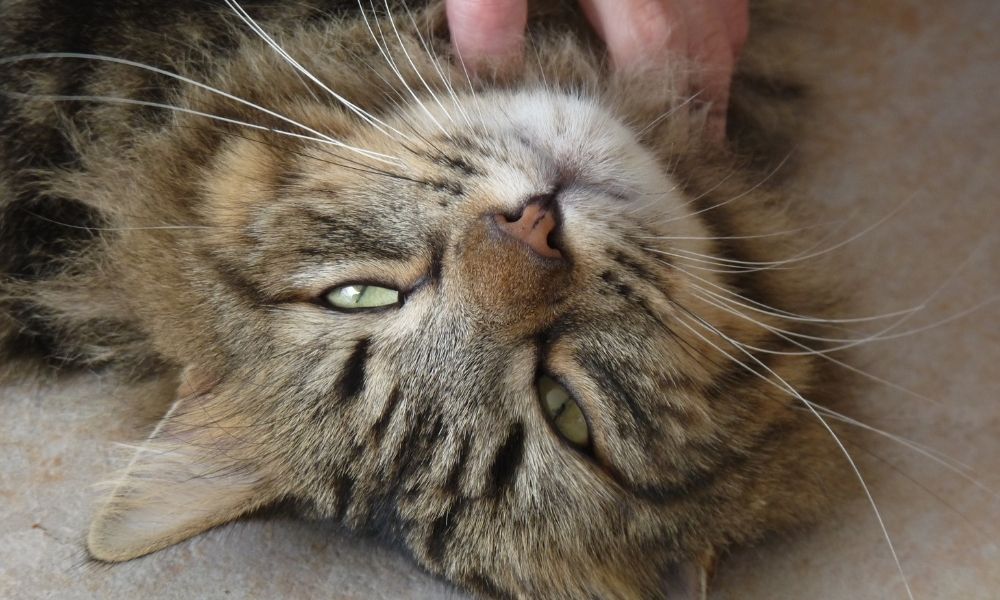
Purring, that familiar, comforting hum emanating from our feline friends, is one of the most distinctive and cherished cat behaviors. While it’s commonly linked to contentment, the act of purring is multi-dimensional, potentially serving as a conduit for communication and healing.
The Therapeutic Magic of Purring
Scientifically speaking, a cat’s purr vibrates within a frequency range of 25 to 150 Hertz, which interestingly, is also the frequency range known to be medically therapeutic for humans.
These vibrations can promote healing, reduce stress and blood pressure, and even alleviate symptoms of dyspnea. So, when your cat snuggles next to you and purrs, it’s not just providing warmth and affection; it might also be offering a dose of natural therapy.
Purring as a Channel for Communication
While contentment is a primary reason for purring, cats also purr when they’re in pain, anxious, or even when they’re hungry. This versatility hints at purring being more than just an expression of happiness.
It’s a nuanced form of communication, conveying a range of emotions and needs. When your cat purrs while looking intently into your eyes, it might be trying to “speak” to you, to convey a sentiment, or to establish a connection beyond the physical realm.
Resonating with Your Emotional State
Cats are astute observers of human behavior and emotions. They often synchronize their energy with their owners. If you’re feeling stressed or anxious, your cat might purr more intensely or consistently when near you, as if trying to provide a calming influence.
On happier days, the purr might be lighter, and more melodic, celebrating the shared joy. This adaptability suggests that a cat’s purring can be a reflection or response to our emotional state, emphasizing the deep bond shared.
In conclusion
The act of purring is a testament to the multifaceted nature of feline communication. It’s a symphony of sound and vibration, interwoven with intent, emotion, and a desire for connection.
The next time you’re enveloped in the gentle hum of your cat’s purr, take a moment to appreciate the depth of communication and healing being offered and let yourself be drawn into that special world of feline telepathy.
Sign #6: Dream Synchronization
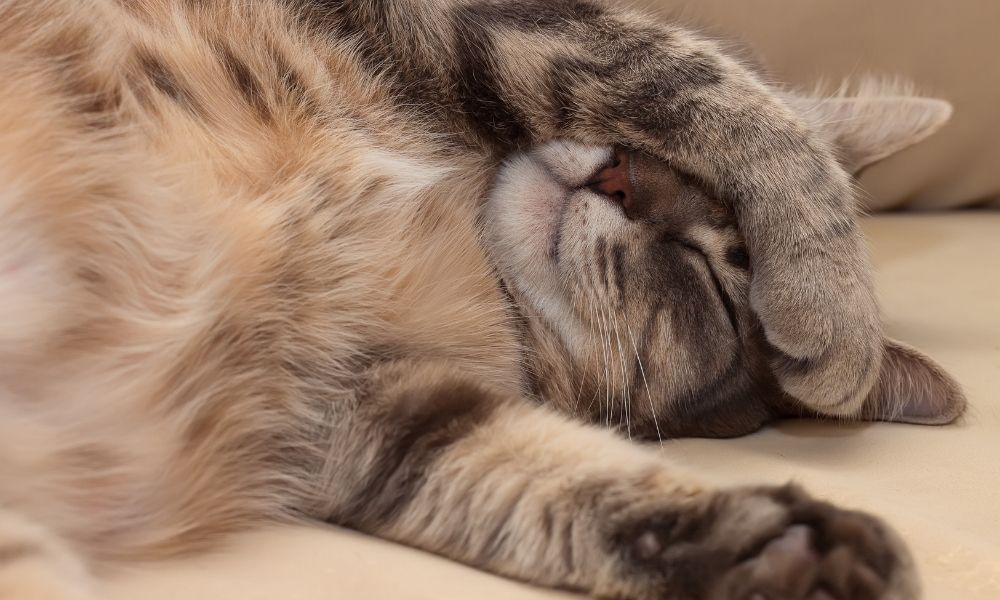
Dreams are ethereal, mysterious, and often a reflection of our subconscious. But what if our dreams weren’t just solitary journeys?
What if, in the vast realm of sleep, our minds occasionally connected with our feline companions, leading to shared dream experiences? While it sounds like something straight out of a fantasy novel, numerous cat owners have reported instances of dream synchronization with their cats.
Aligned Dream Experiences
Some cat parents have woken up from vivid dreams of their cats engaging in specific activities, only to find evidence that their cats exhibited the same behavior while they slept.
For instance, dreaming of a cat chasing and playing with butterflies, and waking up to find a collection of moth wings on the bedroom floor. These coincidences raise the intriguing question: is it possible that, in the dream realm, our minds occasionally intersect with our feline friends?
The Shared Dream Space Theory
While science has yet to provide a concrete explanation, there’s a theory suggesting that deeply bonded beings, whether human-human or human-animal, might occasionally tap into a shared dream space. This doesn’t imply a conscious control over the experience, but rather a spontaneous merging of subconscious minds, facilitated by the strength of the bond shared.
Cats and Their Dream Patterns
It’s well-documented that cats dream. Anyone who’s observed a sleeping cat twitch its paws or whiskers, or emit tiny mews, has witnessed a feline in the throes of a dream.
Given that both humans and cats have REM (Rapid Eye Movement) sleep cycles, where most vivid dreaming occurs, it’s tempting to speculate about the possibilities of interconnected dream experiences.
Emotional Resonance as a Bridge
One theory suggests that shared emotional experiences during waking hours can act as bridges to synchronized dreaming. If you and your cat shared a particularly intense or novel experience one day, it might manifest in both your dreams, leading to the feeling of a shared dream narrative.
In summary
While dream synchronization remains a realm of mystery, the anecdotes and experiences of many cat owners lend a touch of magic to the already fascinating bond we share with our feline companions.
Whether or not our dreams truly intertwine, the mere possibility encourages us to appreciate the depth and beauty of the connection we share with our cats, in both waking and dreaming worlds.





